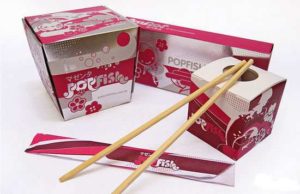Packaging is a product’s”face to the world” and buyers everywhere demand that the “face” they see and buy does not only combine good design and colors but also conforms with high standards relating to hygiene, energy and the environment.
Philippine food processors and exporters need to satisfy these high standards in their packaging in order to survive and grow in global and even in the upscale local markets.
At a conference organized some years back by the Development Bank of the Philippines and the SERDEF, Susumu Ohkata of the Japan Packaging Institute suggests ways by which local entrepreneurs can penetrate the food market in Japan .
Trends in packaging
In Japan and in most of the developing world, there is a marked shift to packaging materials that are flexible, light, disposable, easy to use, and environmentally friendly.
For example, aluminum foil as barrier material has given way to inorganic metallized film such as SiO silica and oxidized aluminum; glass bottles, to laminated cartons; rigid plastic bottles, to flexible pouches such as refill pouches.
Ohkata also cites the growing use of polyethylene (PET) bottles for soya, tea, edible oil and other consumables; flexible pouches with spout and outer carton for hot-filled tea, fruit juices, and liquor; china bowl containers for noodles, cut vegetables; meat stews and other “ready-to-eat” foods. Hang-type packages are also used now for banana chips, dried fish and dried fruits.
The demand for these functional or “value-added” containers is a result of today’s fast and dynamic lifestyles among urban populations and the entry of more and more women into the working forces, says the Japanese expert.
From another source, http://www.ats-sea.agr.gc.ca are more tips for packaging with the Japanese market in mind.
Packaging should accommodate smaller portions: total volume of the package should be suited to both the small Japanese pantries and the diminutive refrigerators with their tiny freezers, and the package should be easy to open and re-seal. It should also resist the high humidity levels found in Japan and be tamper-proof. Date coding and traceability are a must, and the packaging must be robust enough to arrive at the store in pristine condition
Ohkata offers other pointers for food packaging in terms of a package’s principal functions of protecting its content.
Physically, a good package should safeguard against breakage/deformation, humidity and degradation of flavor and texture. Chemically, it should protect the food from oxidization, erosion, and deterioration by light.
The package should also prevent decay, spoilage and insect contagion. A good package must also be impervious to human “mischief” such as hair and dust and deliberate mishandling as well as lend itself well to stacking and storage in warehouses and in households.
On the other hand, packaging design must be visually appealing. Elements to consider are the logo and letter design, combination of colors, shape of packaging, graphics and texture of the material.
Tapping the Japanese export market
There is room for Philippine fresh and processed foods in the Japanese market, Ohkata reveals on a positive note. He identifies herbal teas, such as banaba and sambong, fish pastes, cooking sauces, ube and cassava chips as some of the local products with high demand potential.
Food expenditure in Japan is high, 73 percent of which are for processed food, and the rest for fresh produce of agriculture and fisheries.
More and more of the processed foods are being imported, Ohkata says. Exporters should, however, take into consideration that the Japanese consumer is highly educated and discriminating, health-conscious, consumes a wide diversity of food but in small quantities, and willing to pay for good packaging as long as product quality is guaranteed.
Processed foods must take into careful account the so-called PFC (protein-fat-carbohydrate) balance, he adds.
On the other hand, Ohkata warns aspiring exporters about the “extremely complicated” distribution system for Japanese fresh produce. Distribution of domestic produce is centered around a number of licensed wholesale markets. Wholesalers put the produce on the auction block in order to guarantee a fair price to the farmer.
The imported produce distribution system is loosely based on the system for domestic produce. Tokyo-based importers sell their produce to the wholesaler. As imports have increasingly dominated the markets, more and more importers and distributors are selling directly to retail customers.
At the retail level, fresh vegetables and fruits are sold by the piece. End users expect consistency in size, color and shape. They also expect pre-packaged produce in small quantities inside PS trays and wrapped in film.
Competition, Ohkata stresses, is tight among third-world country-exporters. For this reason, he advises Philippine exporters to compete on the basis of state-of- the-art agricultural production techniques, superior preservation technologies and cost-effective transportation infrastructure.
Here, the importance of maintaining the cold-chain system cannot be overemphasized, Ohkata cautions

